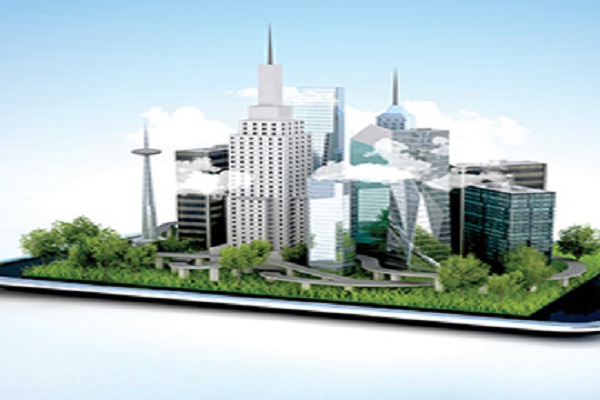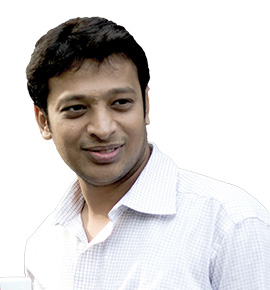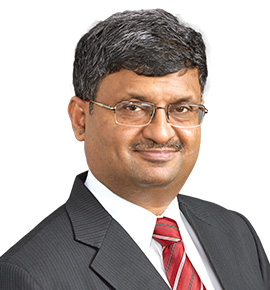
The rapid pace of urbanisation and growing pressure on urban resources is forcing more and more governments across the globe to create smarter urban spaces. And, it’s no different in India. As the government pushes its Digital India dream, it carries along the idea of Smart Cities, for both complement each other, writes Nirmal Anshu Ranjan of Elets News Network (ENN).
Ever since the ascension of Narendra Modi-led NDA Government at the Centre, there has been an increased focus on achieving economic revival, pushing inclusive growth, accelerating the pace of industrial development, providing social security to the people below the poverty line and empowering the common man.
However, the government knew it only too well that the ideas like inclusive growth and empowerment of citizens cannot be translated into reality in a vast and diverse country like India that easily. So, it went ahead with the launch of a number of programmes running on technology, which has the power to transcend geographical barriers to take benefits of governance to the last man in the remotest corner of the land. And, in this context, the Digital India programme of the Centre served well as the all-crucial hinge to support its technologydriven initiatives.

Idea of Digital India
The Digital India initiative of the Government aims to ensure that government services are made available to citizens electronically by improving online infrastructure and by increasing Internet connectivity. It includes an ambitious plan to connect rural areas with high-speed internet network, work on which is already under way in certain pockets of the country. Basically, the concept of Digital India entails three core components: creation of digital infrastructure, delivery of services digitally and digital literacy, which would work together to make the country a smarter nation.

However, the new dispensation was alert to the fact that before a country goes digitally smart, it must also become physically as well as socially smart: if there is inadequacy of housing, roads, transportation, energy, water supply, healthcare, education or sanitation infrastructure, the dream of a digital India is destined to remain a pipedream. In fact, at the root of the problem lies the rapid pace of urbanisation, as hordes of people continue to troop into metros and other big cities in search of employment opportunities and better living standard, thereby leading to an unmanageable load on the limited urban resources.
Towards smarter cities
So, in line with its electoral promise, when the BJP-led Central Government announced the 100 Smart Cities Mission, it caught the imagination of one and all—urban planners, the common man, businesses and other stakeholders—alike. They had already been feeling an acute need for improvement in urban infrastructure, so that cities could cope with the ever-swelling headcount.
| EMPOWERING CITIZENS |
|
Digital India– the dream project of the Government of India focuses to digitally empower each and every citizen of the country making them more efficient, irrespective of climatic, geographical or political diversities. However, in order to maximise its benefits, the use of technology needs to be simplified. Therefore, we have developed solutions which are simple to use just like a mobile phone. Business Octane’s immersive visual collaboration solutions bring paradigm shift in human interaction by empowering people across multiple locations. PARADIGM SHIFT THROUGH SOLUTIONS
|
| SOCIAL INNOVATION FOR BUSINESS GROWTH |
|
The government’s Digital India vision is expected to propel the country into its next phase of growth. While both Smart Cities and Digital India projects will create new economic and social opportunities, they will also bring up challenges related to technology adoption and implementation to make the Digital India vision a reality. ADDRESSING KEY ISSUES
FOCUS We are working with the government and ecosystem players to make the Digital India vision a success. Our social innovation strategy forms the crux of our growth story in India. Social Innovation is Hitachi Data Systems’ holistic approach to helping businesses and societies address the challenges and opportunities that are occurring across today’s business, technology and cultural landscapes. Some large government projects like mygov.in and NPR (National Population Register) are already using our infrastructure. Hitachi Data Systems is already in talks with the government to provide data analytics solutions for better traffic management, faster crime prediction, efficient data centre management at the state-level and better healthcare management to raise life expectancy. Globally, industries are using our social innovation solutions to take advantage of the IoT. Telecom Analytics – Network operators are using our tools to access real-time data analytics and identify potential problems before they affect their customers and deliver consistent service. Public Safety – Our public safety solutions build safer societies and environments, respond enable quick response to situations and increase the effectiveness of limited workforces and funding. Connected Health – Healthcare providers use our integrated care solutions, to aggregate patient data and access, as well as operational and financial data, to enable evidence-based medicine. IT Analytics – Enterprises can transform machine data into actionable insights using a Cloud-based machine-to-machine analytics solution that enables IT teams to gain intelligence. |
Incidentally, a UN State of the World Population report predicts that over 40 percent of India’s population would be living in the urban areas by 2030.
In this backdrop, the government came up with a plan to create 100 Smart Cities, and later the Atal Mission for Rejuvenation and Urban Transformation (AMRUT) scheme to be e“ffected in over 500 tier II and tier III cities. The announcements came much like hope of oxygen to a gasping man. Backing its words with action, it cleared Rs 1 lakh-crore to be spent over creating smarter cities, and then approved an initial investment of Rs 3,120 crore for boosting urban infrastructure in 102 cities across five states under AMRUT plan, in the first go. This funding under the AMRUT is meant for enhancing water supply, sewerage network, non-motorised transportation system and availability of public spaces.
| BRIDGING DIGITAL LEARNING GAP |
|
EDUCATION SKILLS: NEED OF THE HOUR The government’s pro-active push in digital age direction and the digital support offered across sectors is surely going to benefit millions of people. This can offer education skills as well as many technologies across a wide spectrum of users. It can enable many people in remote geographical locations to access mainstream education, skill development, facilities and communication. CHALLENGES
OPPORTUNITIES
|
| SMARTER SOLUTIONS FOR DIGITAL AGE |
|
Nokia believes that the Digital India initiative can make a great difference to the country right now. To accomplish a truly Digital India, the government must start by building on the infrastructure that is already in place, and integrating the right technology — to accelerate the delivery of services that create a more connected society. While India’s strengths in IT and growth in telecommunication sector are acknowledged, there is still a major gap in basic connectivity infrastructure such as Internet and broadband outreach and smartphone penetration. This can potentially be a major obstacle to fully realising the Digital India vision and that is where Nokia can use its experience and advanced solutions to help bridge the gap. BUILDING BLOCKS
ROADMAP Nokia, along with operator partners is working to leverage mobile subscriber location, usage & traffic, and demographic data to provide valuable insights and big data analytics under “Nokia Data Services”, which will be used by urban planners, retail, fi nance and banking, hospitality and other industries to provide smart city solutions. |
| DIGITAL CONNECT |
|
I believe Digital India is one of those visionary ideas that have the potential and depth to transform India. The plan is to establish a digital platform to digitally connect and deliver government programmes and services to individuals across India, alongside content and services user want to access. CHALLENGES
OPPORTUNITIES GALORE
|
Boost to eGovernance
A prominent feature of a Smart City around the world is that they have used eGovernance as an effective tool to serve citizens better, re-engineer internal business processes, increase transparency, accountability and citizen participation and use resources in an environment-friendly manner. Even though, broadly speaking, eGovernance initiatives usually account for only 10-15 percent of the total investments, they are an essential part of the overall city architecture.
eGovernance also reduces the cost of governance substantially, as a number of countries have opted for centrally-hosted or Cloud- based platforms for ICT solutions with a view to minimising investments in hardware and digital infrastructure. As a developing country, it is desirable for India to adopt a centrally-hosted/Cloud- based solution to slash an avoidable expenditure, which is not possible in traditional cities.
Coming to the states in India, Maharashtra has been one of the early adopters of the concept of ICT-driven Smart City, and it had moved towards raising a high-tech city when hardly anyone had moved in the direction.
Digital Maharashtra
As the Union government launched the Smart Cities programme, it was lapped up by the Maharashtra Government. In a recent interview to Elets News Network (ENN), Chief Minister Devendra Fadnavis said: “It (the Smart Cities programme) is being monitored by the Centre and will enter implementation stage in the coming months. For each of the 10 cities in Maharashtra that will be developed as a Smart City, I have appointed a senior bureaucrat as a mentor.
“Maharashtra is the most industrialised State in the country, with a vibrant IT economy witnessing increasing urbanisation, and it aspires to create sustainable and friendly urban spaces that integrate the use of technology, social media, community participation and eGovernance to make cities smarter – smart cities.”
Going a step further, the State has also undertaken a ‘Digital Maharashtra’ initiative. A senior official of the State told ENN that expressing his firm belief in technology as a driver of effi ciency, the Chief Minister has undertaken the programme. “Th ere are about 48 projects spanning across the departments within the government. Their progress is monitored on a regular basis and issues resolved to help aid speedy implementation.”
Rural empowerment
Similarly, ‘Digital Village’ programme of Maharashtra aims at rural empowerment. With its help, the government is making efforts to ensure better management of rural economy, provide opportunities at par with cities and bring them to the mainstream, so that they can enjoy the benefits of a progressing state.
| TRANSITION FROM eCOMMERCE TO mCOMMERCE |
|
In today’s time when the world is moving from an eCommerce to an mCommerce platform, companies need advanced technology assistance and support. In a world of mobile workforce management, though mobility continues to form an integral part with a significant increase in the number of mobile workers but lack of a strong mobile strategy stops the companies in leveraging their best. However, the problem is this doesn’t stop the companies incorporating any mobile technology as it’s less expensive and easy to use. According to an IDC report, Asia Pacific will see the largest increase in total number of mobile workers with 601.7 million mobile workers in 2010 and 838.7 million in 2015 leaving a huge space of opportunities for the mobile workforce players in investing in such a market. OPPORTUNITIES
|
| EYING ADVANCED THREAT SOLUTIONS |
|
The digital age has ushered in new opportunities for economic growth. As the government, businesses and citizens evolve to take advantage of these opportunities, they face newer risks and threats from multiple sources. THREATS
BATTLING AGAINST THREATS
FireEye can help CISOs re-imagine their security approach across the platform to protect multiple things, including endpoint, email, web, file and mobile security. Our technology, intelligence and expertise help organisations defend themselves against the most advanced threats in today’s cyber security landscape. |
“From its planning and concept, it is indeed one of its kind in the country. Lot of work has gone into identifying the core indexes of the villages and then identifying a plan to help review and rejuvenate the rural ecosystem,” said Kaustubh Dhavse, Officer on Special Duty (OSD) to the Chief Minister.
Well, going by the belief that “when going gets tough, the smart get going”, one is sure to see more and more states adopting a similar aggression in their approach to become “smarter”, especially when there is a dispensation at the Centre that is ready for hand-holding to make India a smart country – both physically and digitally.
Be a part of Elets Collaborative Initiatives. Join Us for Upcoming Events and explore business opportunities. Like us on Facebook , connect with us on LinkedIn and follow us on Twitter, Instagram.


















